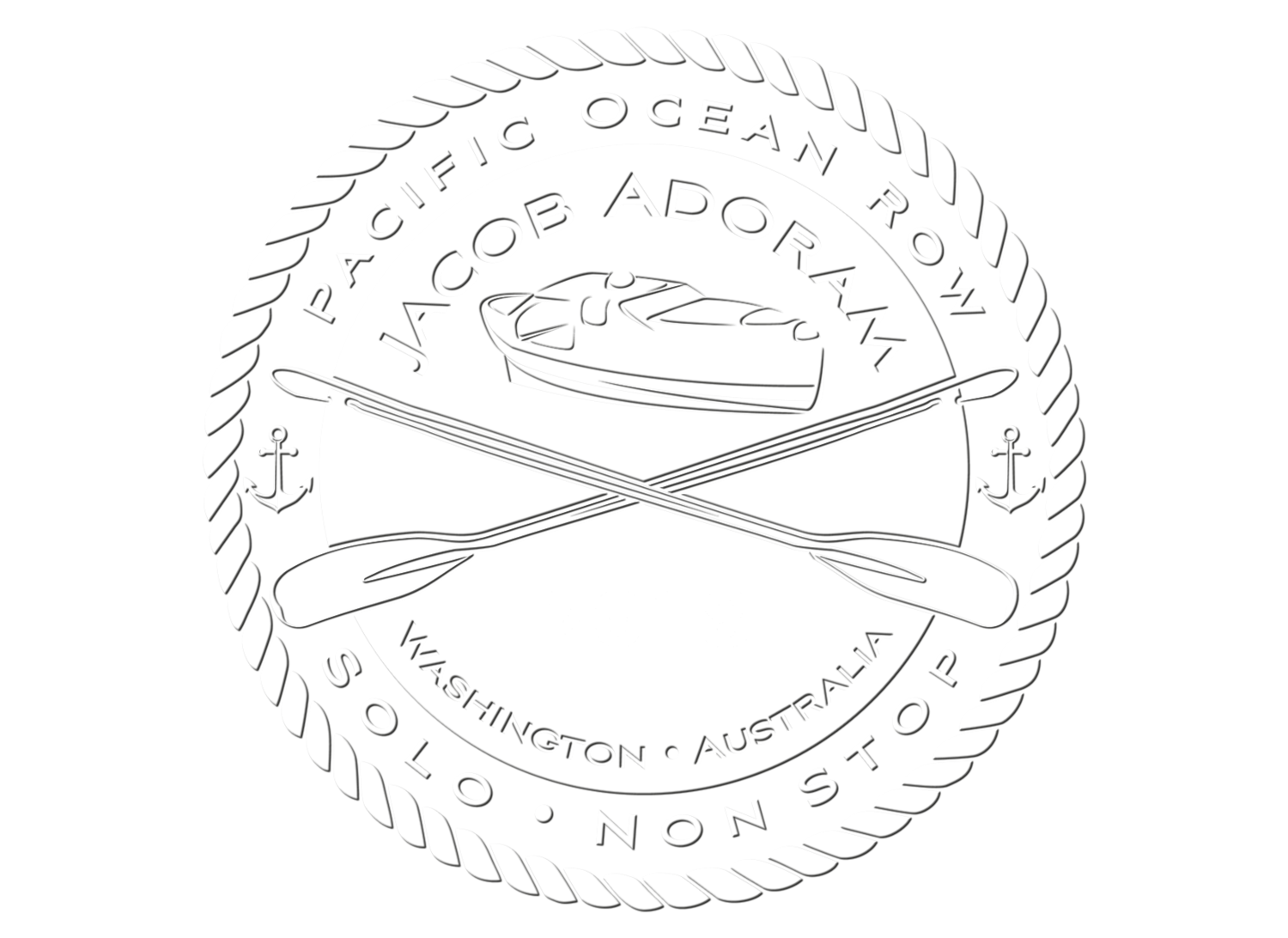Once the food is down and sunscreen on, I debate making a second coffee before heading outside. Alright, I'll make a second cup. Weak though, we're in conservation mode after all. I don't have cup holders anywhere, with the exception of makeshift devices constructed with 550 parachute cord. It's just a thin rope, so the improvised cup holders only hold until about 35 degrees of roll. After which, I have a projectile coffee mug on my hands. Another battle for another day. Today it should hold fine until 0900 or 1000, before the winds pick up.
I position the oars into the rowing position after removing the securing lanyards. I'm overly cautious when securing the oars during rest periods. Unless the seas are raging, the oars are fine sitting in the oar lock with just one lanyard. They are physically tied to the boat, so they'll just trail behind me should the seas attempt to claim them. And the seas have made this attempt, of course. The bigger threat is breaking an oar underneath the boat in a cross current. I've had a few close calls in rough conditions. When one side of the boat lifts, the oar blade drops to maintain contact with the water, and the oar handle rises in response. It really rises; I've jammed fingers between the oar handle and the hardtop on several occasions. If the handle is on an upward trajectory that's sure to crush a digit, I just release and watch. The watching portion has ended in awkward recoveries. It's amazing the number of ways an oar can get jammed into unfortunate places. Consequently, I've been contemplating a 550 cord solution that also won't impede on the rowing itself.
I turn on the weather and steering instruments and get comfortable. I stretch my back, un-pin the seat, strap my feet into position and begin the first rowing session. The first row is silent, as I've made customary. I get a sense for how the boat is responding to the environment. It's not entirely obvious or self-evident how the boat will respond. Seemingly identical conditions can produce wildly different results. Rowing on a heading of 180 with winds directly out of the north can produce a course of 180 or 350, or anything in between. This is because heading and winds aren't the only factors. Teasing out all the different variables is possible, but not entirely necessary. With the overview of weather in mind, I've found the "stickiness" of the blades through the water is the best rule-of-thumb indicator for expected performance.
Some days the blades feel like they are cutting through mud, no matter how hard or how long I row. Other days, if feels like the blades are spring loaded and cutting through air. I'm getting better at deciphering the details, but today I just accept that I'm operating on about a 45% stickiness level, which generally produces about 0.9 knots over the ground (not through the water) if I row hard. 100% sticky is pointless. The boat might be too big, or I might be too weak. Either way, I need to choose my rowing efforts carefully. Rowing at 70% sticky for 10 hours might be equally as effective as rowing zero hours with a deployed sea anchor. As a clue - the longer the winds maintain a constant favorable direction, the lower the stickiness level.
I continue at 45%. Averaging 0.9 knots felt awful 4 months ago, now it's acceptable. Especially if it's on a desired course. Today it's not, which is more common. I'm deviating from desired by at least 20 degrees, further lowering my speed over the ground from 0.9 to 0.7 knots. It's starting to feel less acceptable. I could average 2.5-3.0 knots in Puget Sound fully loaded, so this drop in performance is still tough to stomach. I attempt maximizing performance with small tweaks in heading and course using onboard instruments (sometimes huge tweaks). The electronic compass is off by 15 degrees as compared to the traditional wet compass. My handheld compass agrees with the wet compass, so I've calibrated my brain to think in 15 degree offsets when looking at the electronic instruments. Flooding of the heading sensor definitely didn't help the situation, and Garmin makes these adjustments unnecessarily difficult, so I've just accepted it. Just like my watch that looses 4.2 seconds per day, the manual corrections are easier to contend with than the underlying root problem.
Another indicator of performance is the variability of course over the ground. This is also related to stickiness, which is related to weather and everything else. If I'm holding a solid 1.5 knots indicated speed over ground, but the course is fluctuating 15 degrees, then it's more like 1.2 knots over the ground in reality. If the course is fluctuating near 80 degrees, it's closer to 0.5 knots over the ground. Why these course fluctuations are occurring is still a partial mystery, but I'm learning. Of course, despite all this knowledge, it's all useless when Mother Nature wants her way. I once rowed a full 360 degree "circle" and my course over the ground didn't change at all. Sometimes it's best to just hang up the oars and take a nap. Today, I shall carry on.

